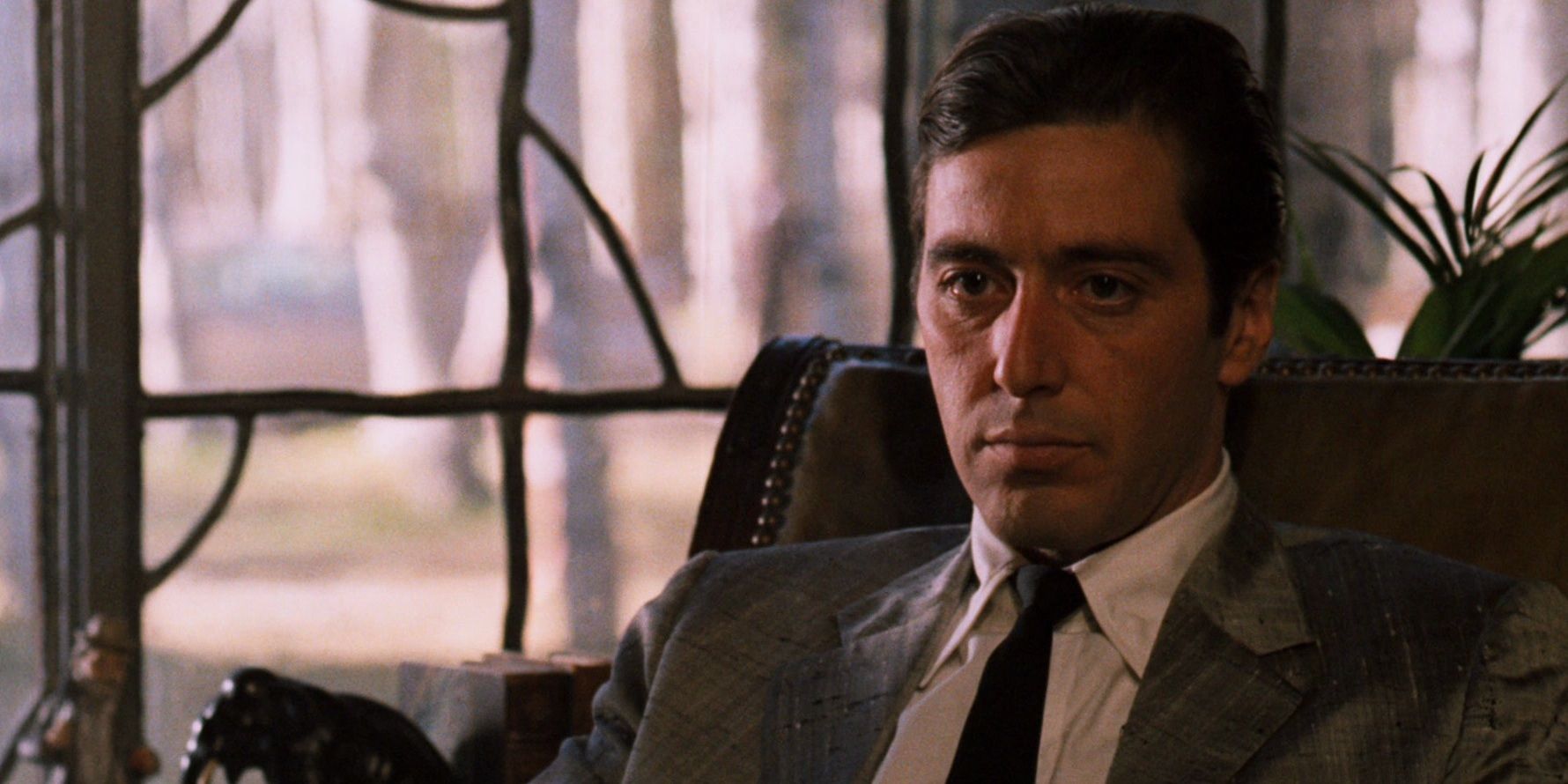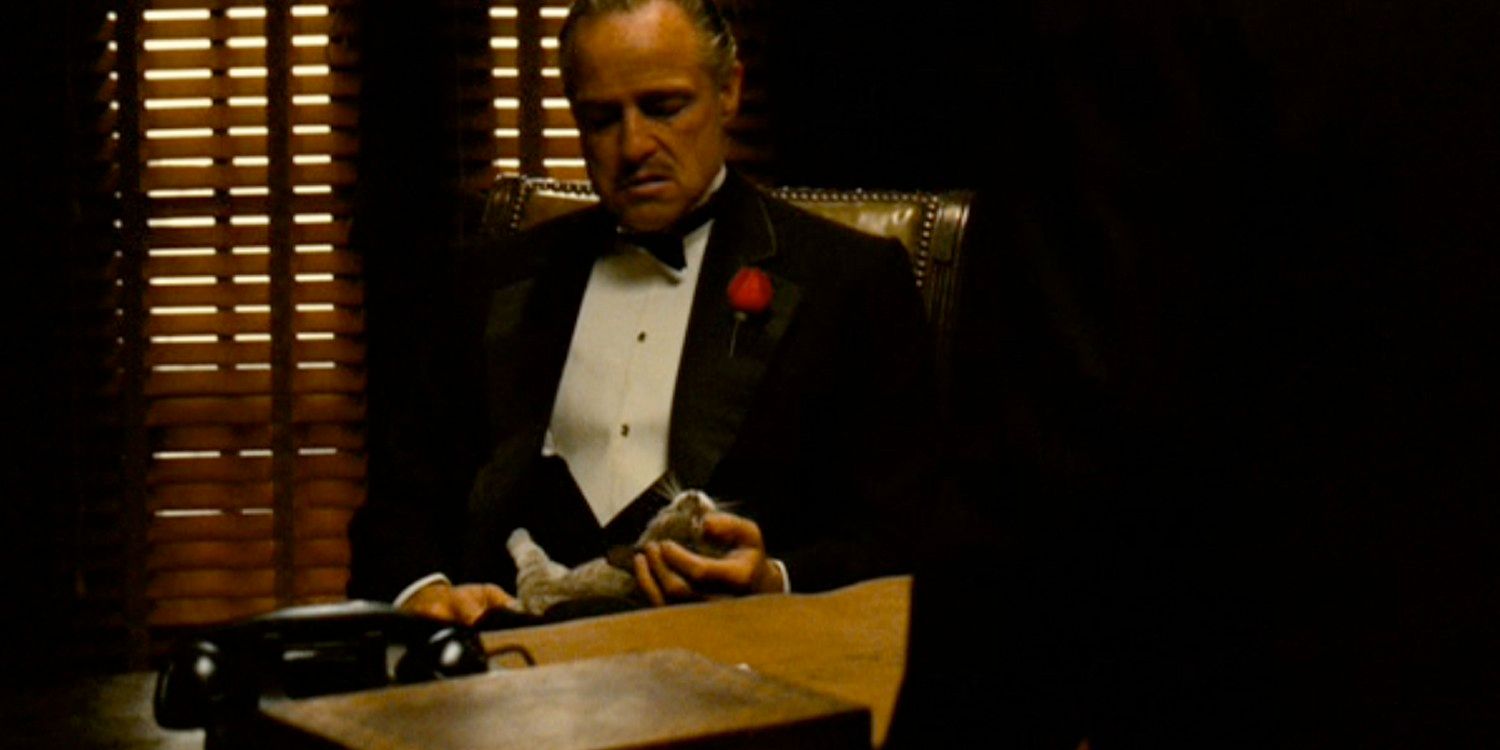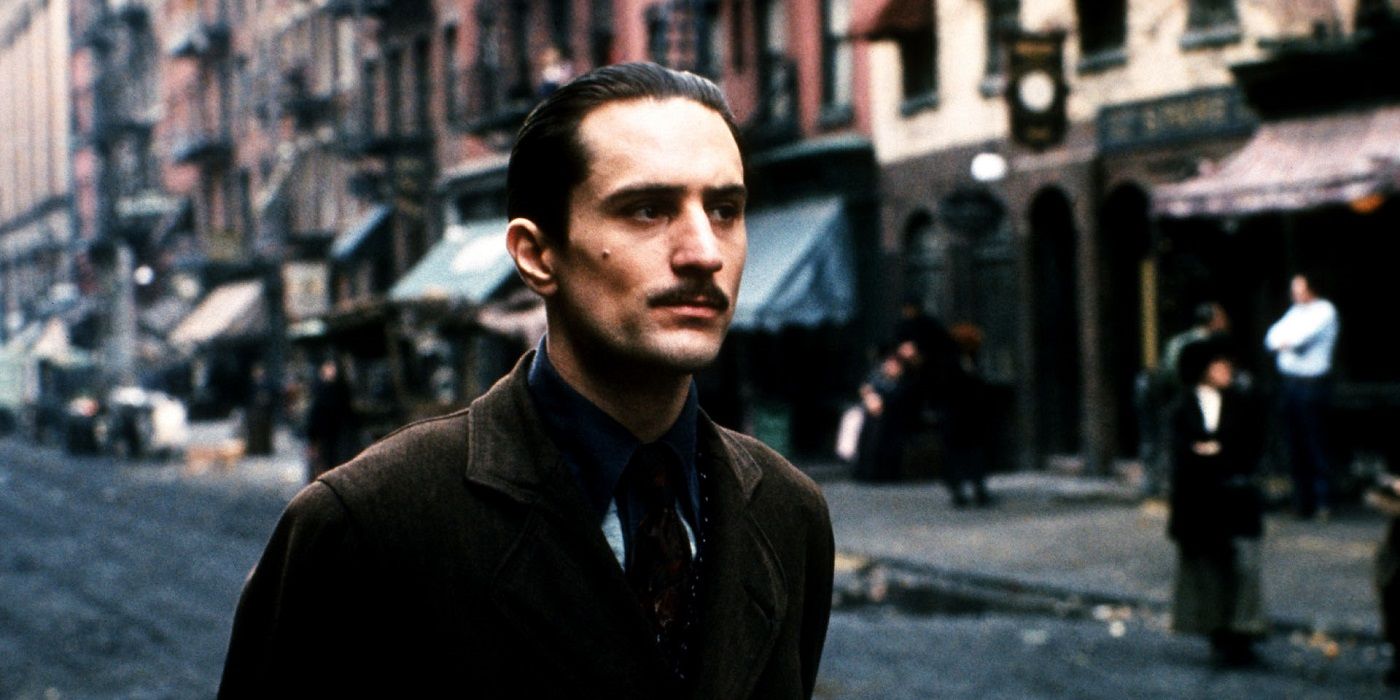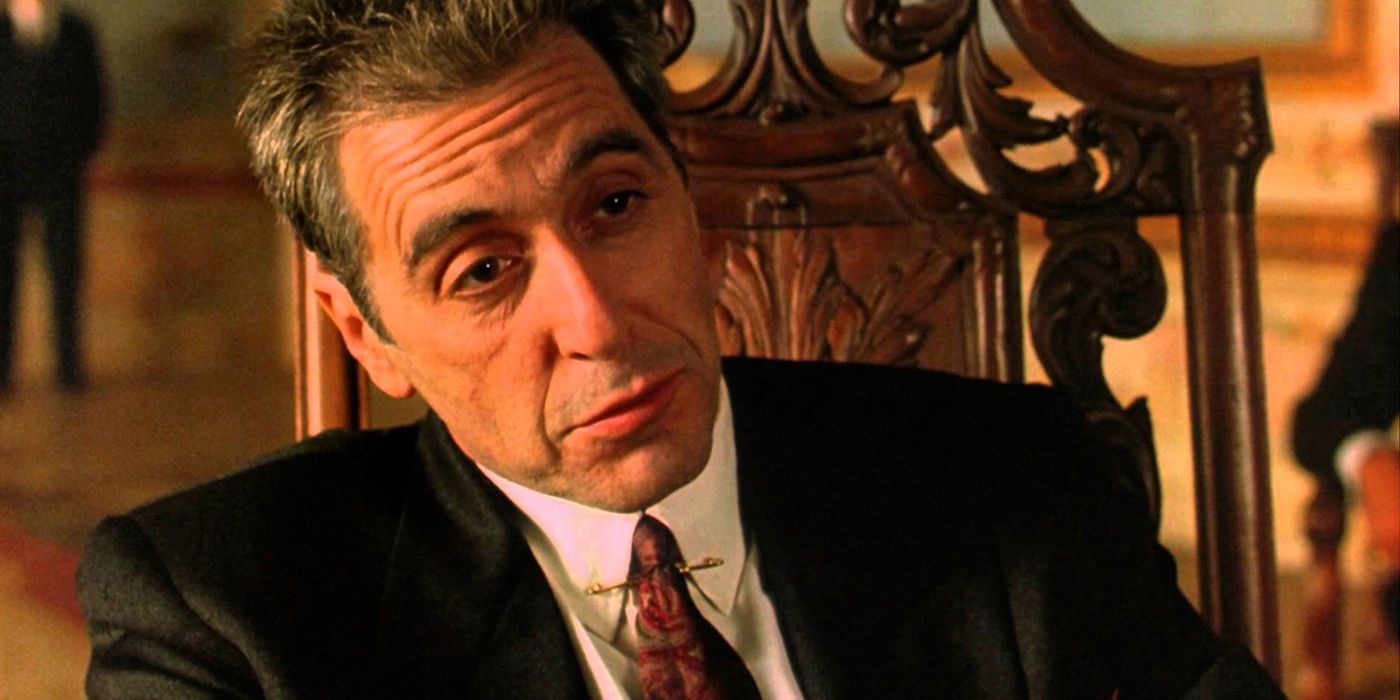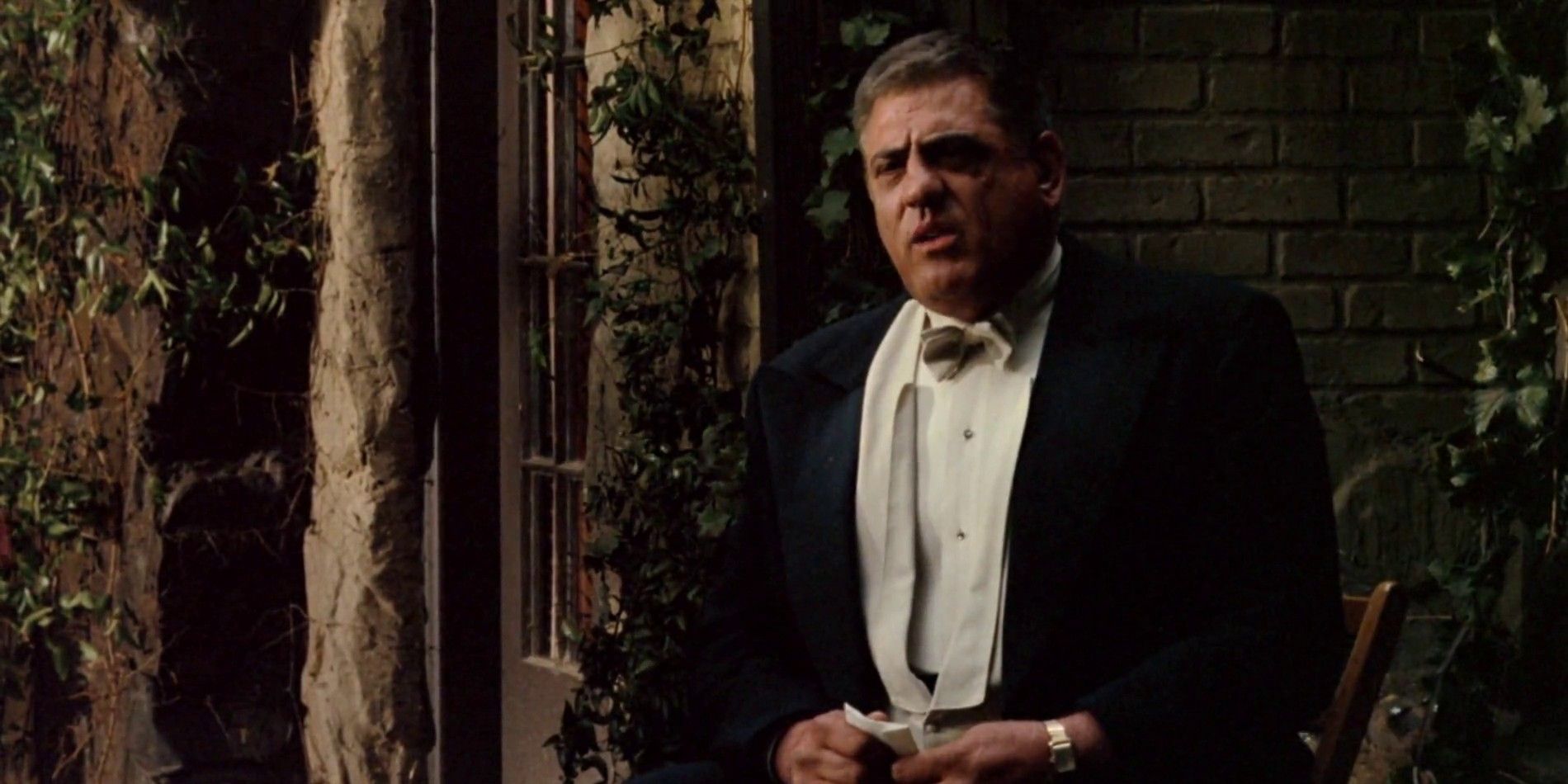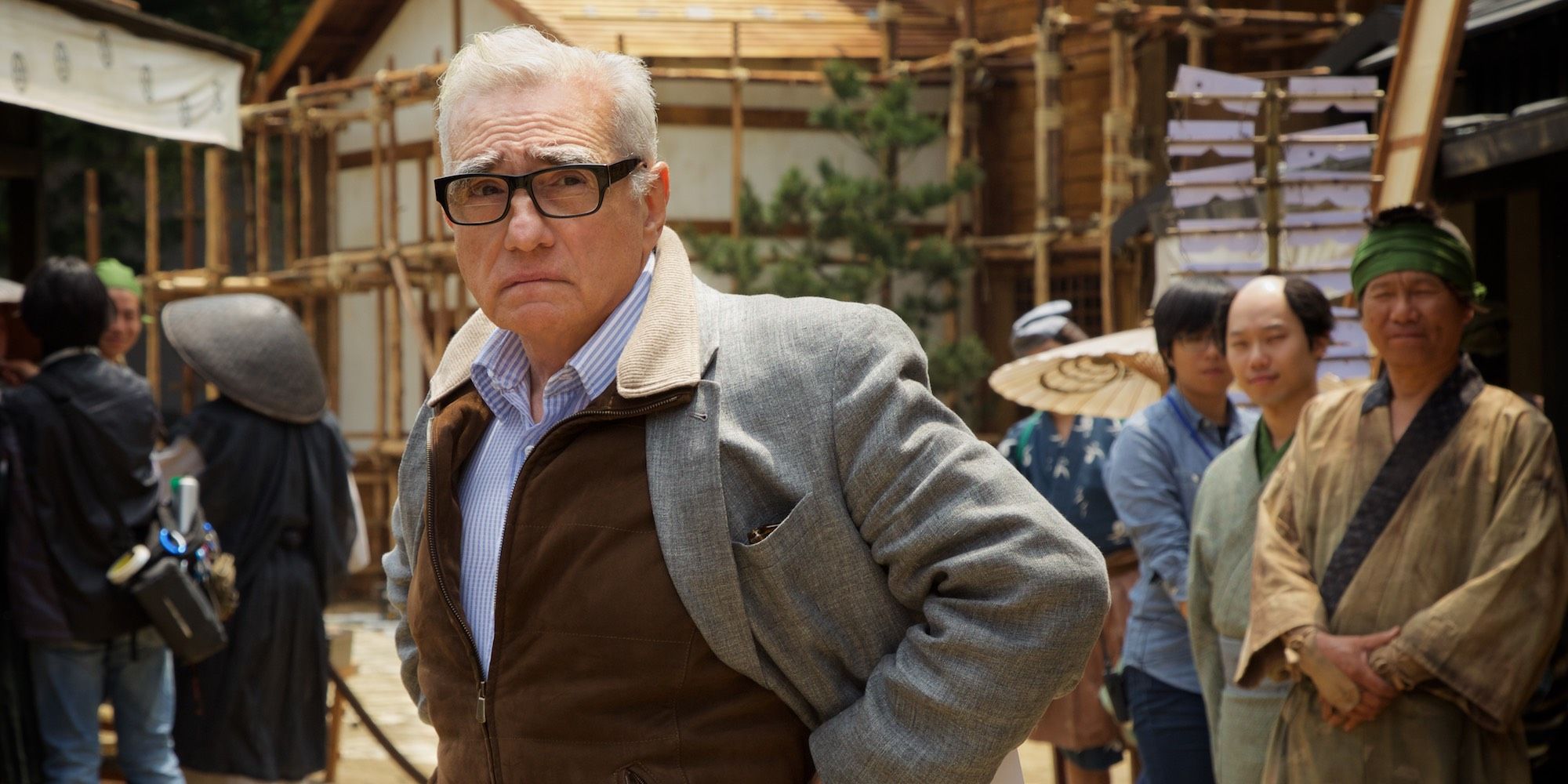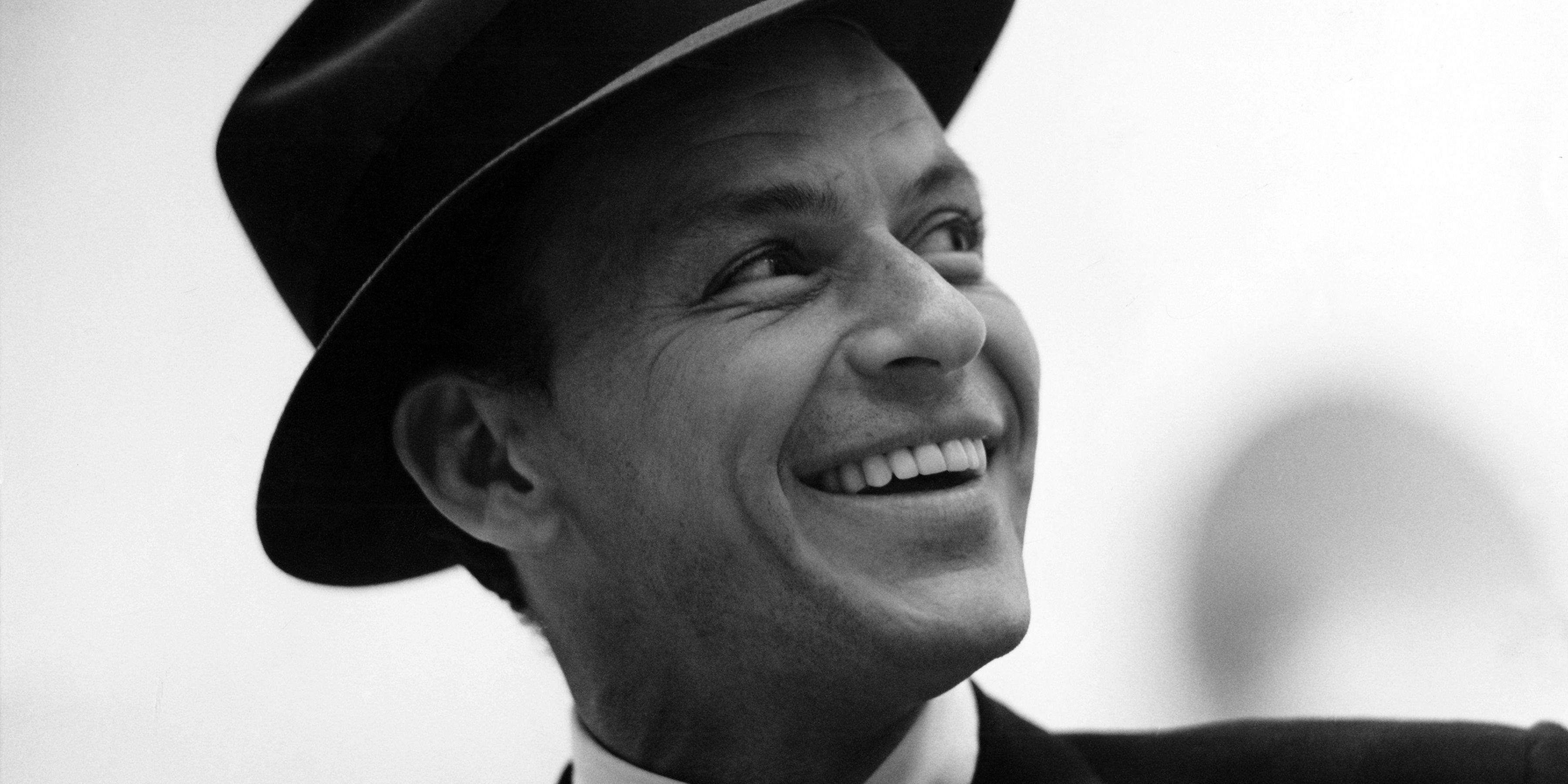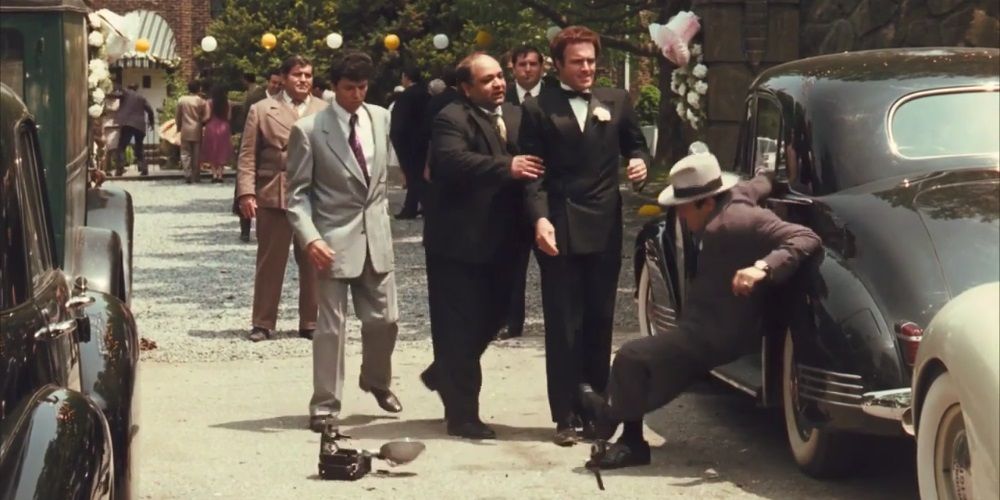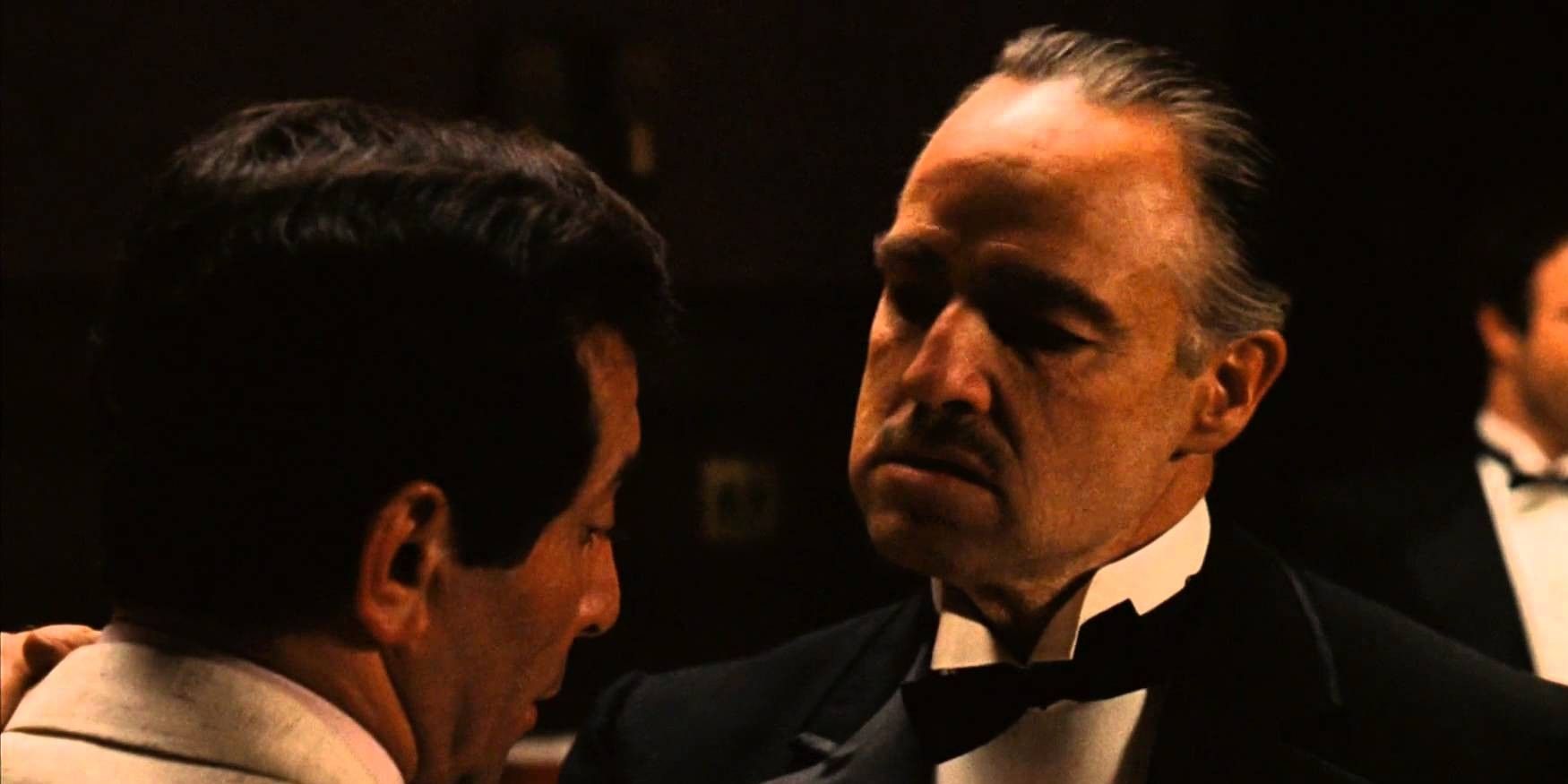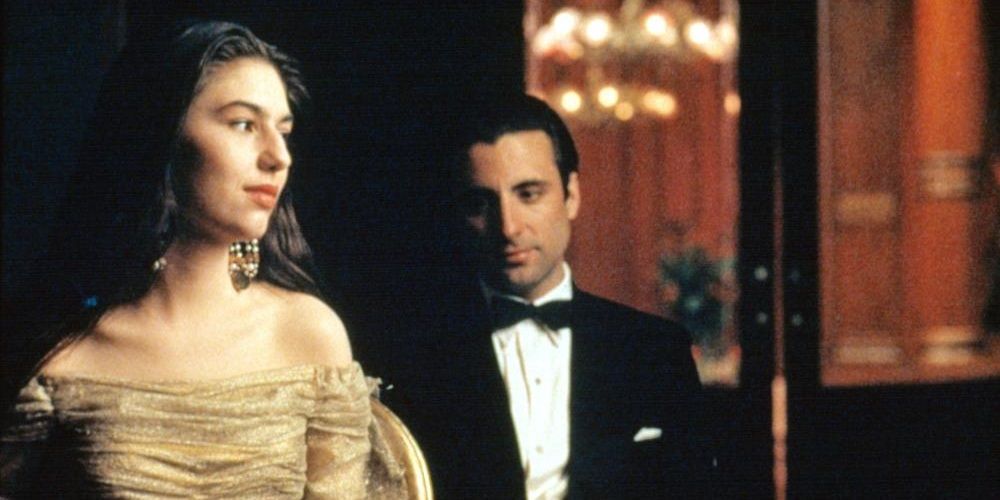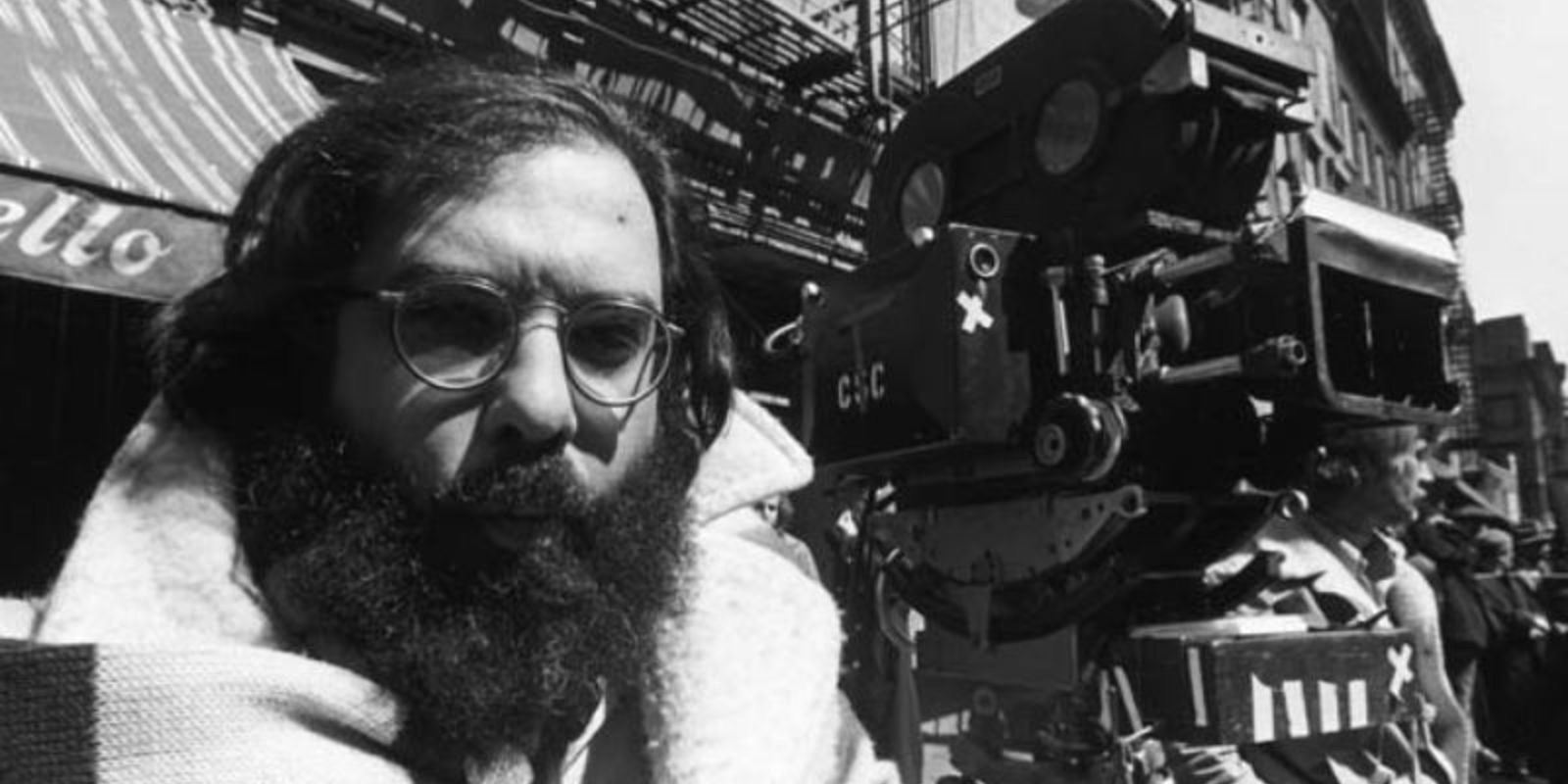The Godfather and its sequel are praised as two of the greatest movies ever made (the third one, not so much), and they remain a pair of timeless classics that film buffs revisit again and again. But making them wasn’t easy. Throughout the early ‘70s and much later in the early ‘90s, production on The Godfather trilogy was marred with problems. Director Francis Ford Coppola constantly clashed with the studio, from executives trying to get him replaced while shooting the first movie to the filmmaker not even wanting to make a third one. So, here are 10 Behind-The-Scenes Facts About The Godfather Trilogy You Can’t Refuse.
Don Corleone’s cat was a stray
The cat that Vito Corleone can be seen holding in The Godfather’s opening scene wasn’t included in the original script. On his way to set, Francis Ford Coppola found the cat as a stray, wandering around the Paramount Pictures lot, and he decided that it would be fun to give the Don a cat to hold during his opening scenes. It made him look like the iconic James Bond villain Ernst Blofeld, who used to stroke a cat while explaining his evil plans. The cat was so happy to be receiving attention that it purred through the whole scene, which covered up a lot of Marlon Brando’s dialogue, necessitating a lot of his lines to be looped in post-production.
Francis Ford Coppola had to reshoot Part II scenes featuring zippers
If there’s one aspect of Francis Ford Coppola’s filmmaking that irritates money-conscious studios the most, it’s probably his attention to detail. In an early cut of The Godfather Part II, a few actors in the scenes set at the turn of the century were wearing pants that had zippers. However, one of the musicians working on the film pointed out to the director that the zipper hadn’t been invented at that time. So, instead of just leaving in the minor historical inaccuracy, Coppola reshot any scene featuring an actor with a zipper and gave them pants with a button-fly instead. This probably irked the studio suits, who had to fund a bunch of reshoots just to change the characters’ style of pants.
Michael Corleone was almost written out of Part III
When Al Pacino was contacted about reprising his role as Michael Corleone for The Godfather Part III, the producers offered him $5 million. He didn’t feel that this was enough, so he demanded to be paid $7 million, plus a percentage of the film’s box office gross. In response, Francis Ford Coppola threatened to write him out of the movie completely. This draft of the script for Part III would’ve opened with Michael’s funeral and moved on from there to avoid needing Pacino. In the end, the actor accepted the $5 million and his character remained in the movie after all.
Luca Brasi’s nervousness around Don Corleone is genuine
In the first Godfather movie, many fans have noticed that Luca Brasi acts nervously around Don Corleone. As it turns out, these nerves were genuine. Lenny Montana, the actor who was playing Luca Brasi, felt so intimidated to be in a scene with Marlon Brando that he could barely get through his dialogue when he was opposite the acting legend. In fact, in their first take together, Montana fluffed a bunch of his lines, as Brando terrified him. Francis Ford Coppola decided that it worked well for the character to stumble through his words in front of a fearsome mafia boss. This is why the director added the scene in which Luca practices his speech.
Francis Ford Coppola wanted Martin Scorsese to direct Part II
The first Godfather movie generated so much early buzz from critics that the studio began developing a sequel before it was even released. However, Francis Ford Coppola had such a nightmare directing the first one that he didn’t want to helm the sequel. He asked the studio if he could choose another director and just act as a producer.
The studio agreed, until Coppola chose Martin Scorsese to direct the sequel. Paramount executives didn’t think a then-fledgling Scorsese could handle the movie. Of course, turning down Scorsese for directing a mafia epic sounds ridiculous now that he’s helmed a bunch of the genre’s finest installments.
Frank Sinatra turned down Eli Wallach’s role in Part III
Legendary crooner Frank Sinatra initially had an adamant stance against The Godfather films, having been offered roles in the earlier installments. However, following the popularity of the first two, Sinatra reversed that stance and expressed interest in appearing in the third movie. Francis Ford Coppola offered him the role of Don Altobello, but Sinatra felt that the pay they were offering was too low, so he turned it down and the role went to Eli Wallach. Funnily enough, decades earlier, Sinatra had gotten a role in From Here to Eternity after Wallach turned it down due to a small paycheck.
James Caan improvised breaking the FBI photographer’s camera
In an early scene in The Godfather outside the wedding, Sonny Corleone confronts an FBI photographer who is snapping shots of the family. The part where he grabs the camera out of the guy’s hands and smashes it on the ground was improvised by James Caan. The photographer’s terrified reaction is genuine, as he wasn’t expecting it and didn’t know what was going on. Caan also improvised throwing money at the photographer to pay for the camera, because according to the actor, where he comes from, if you break something, it was customary to either replace the broken property or give the owner the money to replace it.
Marlon Brando was supposed to appear in the final scene of Part II
In the final scene of The Godfather Part II, the two timelines come together as the Corleone family have dinner, including a young, wayward Michael, awaiting the arrival of Vito. Marlon Brando was originally supposed to make a cameo appearance in this scene, which would’ve made sense (and some fans were expecting it when the scene played out). However, Brando turned down the opportunity to appear in the scene — he refused the offer, if you will — because he was annoyed by how Paramount treated him during production of the first film. Francis Ford Coppola had to rewrite the scene not to include Vito and it was shot without Brando’s involvement the following day.
Francis Ford Coppola only had six weeks to write Part III
Francis Ford Coppola has said many times that he’s unhappy with how The Godfather Part III turned out, blaming the lack of time he had to work on the script for the disappointing outcome. He wanted a few months to go through a few drafts of the script and get it right, but Paramount was determined to make a Christmas 1990 release date, so they only gave him six weeks to write the movie.
As it turns out, the script feels rushed because it was rushed. But it worked out for Paramount, as the Christmas release date led to an impressive box office haul and a Best Picture nod.
Paramount tried to have Francis Ford Coppola replaced as director
As tends to be the case with all directors and their greatest films, Francis Ford Coppola constantly clashed with Paramount Pictures executives during the making of The Godfather. The executives wanted to replace Coppola, claiming that he couldn’t stick to the schedule and he was charging unnecessary expenses to the studio. However, it’s clear from the fact that Coppola delivered the film ahead of schedule and under budget that Paramount’s problems with the filmmaker went deeper than that. His initial cut was just over two hours long and the studio demanded that he make it about an hour longer to develop the family more, which is the opposite of today’s Hollywood procedure.

